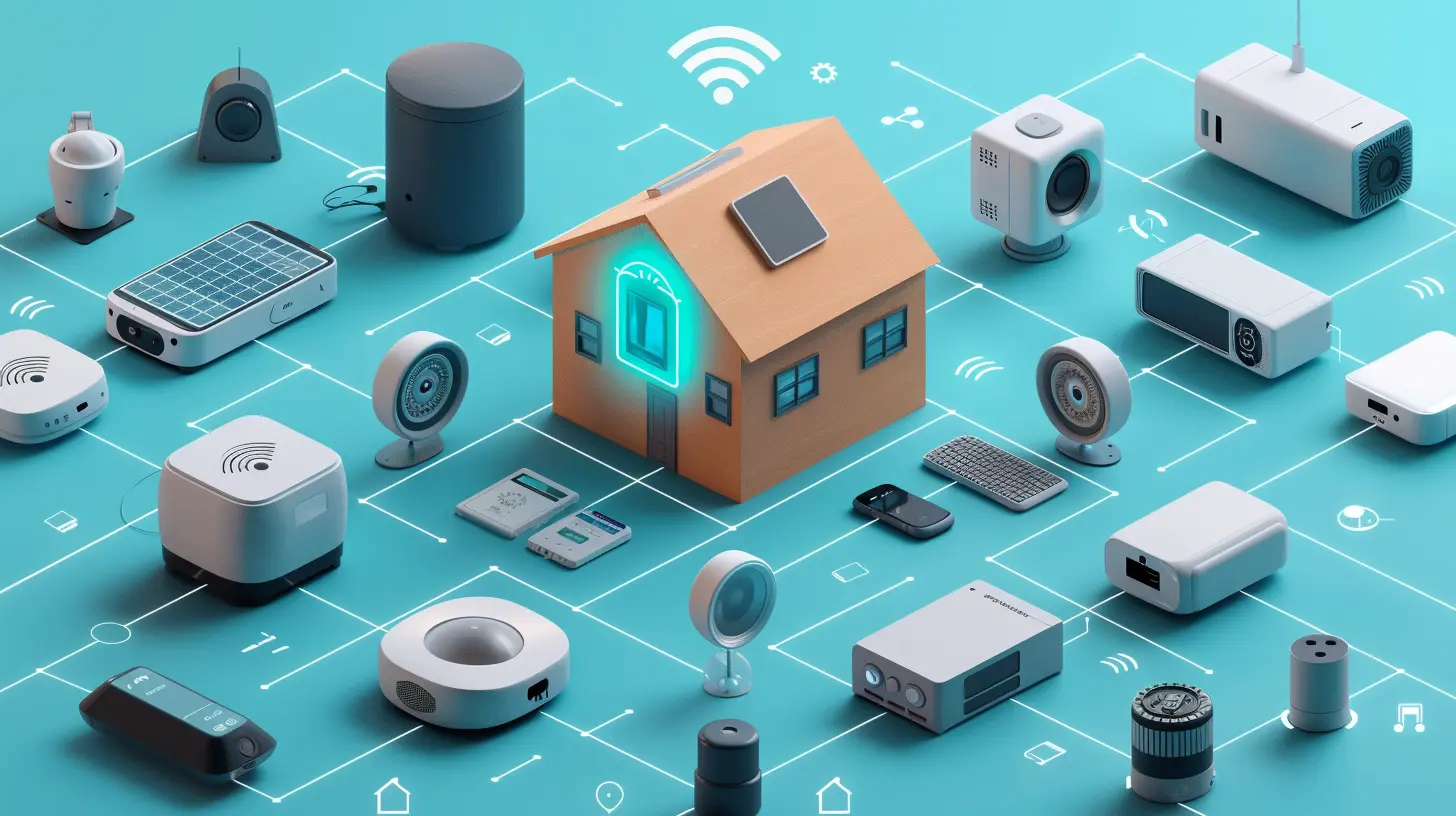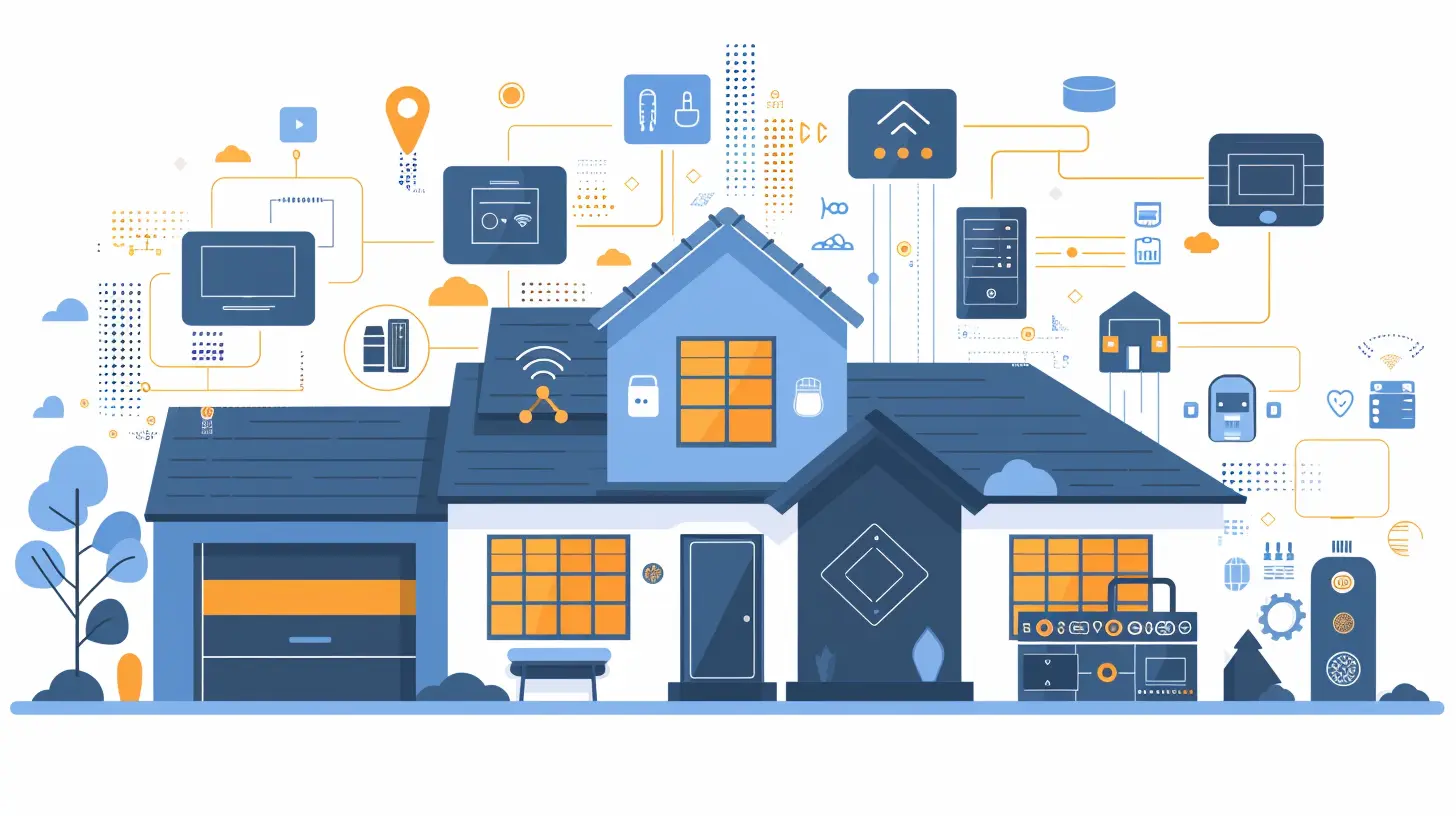How to Create a Smart Home Ecosystem with Multiple Brands
12 May 2025
Building a smart home is no longer a luxury—it's a convenience that makes everyday life easier. But here’s the thing: most smart gadgets are made by different brands, and they don’t always play nicely together. So, how do you create a seamless smart home ecosystem when you’re juggling multiple brands?
In this guide, we’ll break it all down—choosing the right hub, ensuring compatibility, and making everything work together smoothly. Let’s dive in! 
Why Mix and Match Smart Devices?
Wouldn’t it be easier to just stick to one brand? Maybe. But in reality, no single brand makes the best version of every smart device. Here’s why mixing different brands is often the smarter choice:- Better Features: Some brands excel in specific categories (e.g., Philips Hue for lighting, Nest for thermostats).
- Cost Efficiency: Different brands offer various price ranges, letting you mix premium and budget-friendly devices.
- More Flexibility: You’re not locked into one ecosystem, giving you room to upgrade or switch brands later.
That said, setting up a multi-brand system requires planning. Let’s get into it. 
1. Choose a Smart Home Hub (or Go Hub-Free)
The hub is like the brain of your smart home. It connects devices and lets them talk to each other. Some common smart home hubs include:- Amazon Echo (Alexa) – Works well with Alexa-compatible devices.
- Google Nest Hub – Ideal for Google Assistant-supported products.
- Apple HomePod (HomeKit) – Best for Apple users.
- Samsung SmartThings – A more universal hub that supports a wide range of devices.
Do You Even Need a Hub?
Not always! Many smart gadgets work over Wi-Fi or Bluetooth and only need a smartphone app (like the Google Home or Alexa app). However, a hub can make automation smoother and reduce Wi-Fi strain.
2. Pick Devices That Speak the Same "Language"
Smart home gear communicates using different protocols. Think of them as different dialects—if they don’t understand each other, they won’t work well together. Here are the main ones:Common Smart Home Protocols:
- Wi-Fi – Most flexible, but too many Wi-Fi devices can clog your network.- Zigbee – Fast and reliable but needs a compatible hub (like SmartThings or Echo with Zigbee support).
- Z-Wave – Similar to Zigbee but works on a different frequency and has a longer range.
- Matter – A new universal standard designed to help different brands work together more easily.
When buying new devices, check if they support Matter, Zigbee, or Z-Wave—this increases compatibility across brands. 
3. Use a Single Smart Assistant
While juggling multiple brands, it’s best to stick to one assistant for voice control and automation. The big three are:- Amazon Alexa – Works with thousands of devices and is great for routines.
- Google Assistant – Excellent for answering questions and controlling devices.
- Apple Siri (HomeKit) – Secure and privacy-focused but has fewer compatible devices.
Pick one and configure all your devices to work with it. It’ll make your life much easier!
4. Automate Your Smart Devices
Now for the fun part—automation! This is where your home starts responding to your needs without you lifting a finger.Simple Smart Home Routines:
- Good Morning Routine – Your lights turn on, the thermostat adjusts, and your coffee starts brewing automatically.- Away Mode – When you leave, the doors lock, lights turn off, and security cameras activate.
- Nighttime Mode – Your blinds close, lights dim, and the thermostat lowers for sleep mode.
Most hubs and apps (like Alexa, Google Home, and Apple HomeKit) let you set up these routines easily.
5. Manage Devices with a Centralized App
If you don’t want to jump between multiple apps, consider using one app to control everything:- Google Home App – Works with many brands and Google Assistant.
- Amazon Alexa App – Integrates well with Alexa-compatible devices.
- Apple Home App – A must if you're using HomeKit.
- Samsung SmartThings App – Best for multi-brand setups with Zigbee/Z-Wave devices.
Some third-party apps like Home Assistant and Hubitat offer even greater customization if you’re tech-savvy.
6. Ensure Security and Privacy
Smart homes are great, but they do come with security risks. Here’s how to keep your setup safe:- Use Strong Passwords – Don’t stick with default passwords on your devices.
- Enable Two-Factor Authentication – Adds an extra layer of security.
- Regularly Update Firmware – Keeps devices protected from vulnerabilities.
- Limit Third-Party Access – Don't connect unnecessary apps or services.
7. Future-Proof Your Smart Home
Technology evolves fast, so think long-term when building your smart home:- Look for Matter-Compatible Devices – Matter is becoming the universal smart home standard.
- Avoid Locked Ecosystems – Some brands limit compatibility, making it harder to mix and match in the future.
- Check for Software Support – Some devices lose updates after a few years—opt for brands known for longevity.
Recommended Multi-Brand Smart Home Setup
Here’s a sample setup with devices from different brands that work well together:| Category | Recommended Device | Brand |
|---------------|-------------------|--------|
| Smart Hub | Amazon Echo | Amazon |
| Smart Lights | Philips Hue | Signify |
| Smart Thermostat | Google Nest | Google |
| Smart Locks | August Smart Lock | August |
| Smart Cameras | Arlo Pro | Arlo |
| Smart Plugs | TP-Link Kasa | TP-Link |
| Smart Sensors | Aqara Motion Sensor | Aqara |
This setup ensures compatibility while taking advantage of the best features from multiple brands.
Final Thoughts
Creating a smart home ecosystem with multiple brands may seem tricky, but with the right hub, smart device choices, and automation, it’s totally doable! Stick to one smart assistant, ensure protocol compatibility, and automate routines for a seamless experience.Don’t be afraid to experiment—your smart home should work for you, not the other way around!
all images in this post were generated using AI tools
Category:
Home AutomationAuthor:

Ugo Coleman
Discussion
rate this article
6 comments
Rosalind Pruitt
Embracing a smart home ecosystem is an exciting journey toward convenience and innovation! By integrating multiple brands, you can personalize your living space for comfort and efficiency. Let technology enhance your lifestyle and create a harmonious environment that adapts to your needs!
May 20, 2025 at 1:34 PM

Ugo Coleman
Thank you! Embracing a smart home ecosystem indeed transforms our living spaces, offering personalized comfort and streamlined efficiency. Let’s explore how to seamlessly integrate diverse brands for an enhanced lifestyle!
Brooks Horne
Great tips! Integrating brands enhances flexibility and user experience.
May 19, 2025 at 11:34 AM

Ugo Coleman
Thank you! I'm glad you found the tips helpful. Integrating brands truly can elevate the user experience in a smart home.
Candace Bowers
Creating a smart home ecosystem with multiple brands requires careful planning. Focus on compatibility, choose a central hub, ensure device interconnectivity, and prioritize security for seamless automation and convenience.
May 15, 2025 at 6:25 PM

Ugo Coleman
Thank you for highlighting these key points! Compatibility and security are indeed vital for a successful smart home ecosystem.
Adeline McGuffin
Unite brands, elevate home, embrace innovation!
May 15, 2025 at 11:52 AM

Ugo Coleman
Thank you! Embracing innovation and uniting brands is key to enhancing the smart home experience. Let's explore how to seamlessly integrate them!
Fay Bowman
Creating a smart home can be exciting yet overwhelming. Remember, it's okay to take your time exploring different brands and solutions. Prioritize what works best for your lifestyle and needs—your comfort is key!
May 14, 2025 at 6:59 PM

Ugo Coleman
Thank you! Great advice—taking the time to find the right solutions for your lifestyle is essential in creating a comfortable smart home.
Yolanda Sullivan
Great insights! Building a smart home ecosystem with multiple brands enhances flexibility and functionality.
May 12, 2025 at 7:59 PM

Ugo Coleman
Thank you! I'm glad you found the insights helpful. A diverse smart home ecosystem can truly maximize convenience and adaptability.




